A.R. Penck
Born Ralf Winkler in 1939 in Dresden, A.R. Penck adopted his pseudonym in 1968 after reading the work of the geologist Albrecht Penck. Having attempted unsuccessfully to gain entry into one of several art schools in the former German Democratic Republic, he resolved to independently pursue art in the mid-1950s. He lived in East Germany until 1980 and unable to exhibit there publicly, he smuggled works out to West Berlin and Switzerland where he was regularly exhibited. Upon emigrating to the West, A.R. Penck lived in London, Dublin and Dusseldorf. He died in Zurich, Switzerland in 2017.
Considered a Neo-Expressionist, A.R. Penck is best known for his paintings and sculptures characterized by simplified figures and forms, and neo-primitive symbols and patterns. His interest lay in the development of a pictorial language based on a simple system of signs, which it would be possible for everyone to decode. The result was a radical reduction in form to a series of outlined stick figures, which he called "Standart", in reference to the signals associated with commonly known standard symbols. He achieved an abstraction of complex, socio-economic situations in flat, pictorial compositions infused with symbolism. Penck was driven not by any system or rational narrative, but by apparent chaos and emotion. In every drawing and every painting he set out to create a purely visual space where the imagination can thrive and viewers can lose themselves.
A.R. Penck participated in the 1984 Venice Biennale as well as in Documenta 5, 6, 7 and 9. Numerous solo exhibitions worldwide include Kunsthalle Bern; Van Abbemuseum, Eindhoven; Museum Ludwig, Cologne; Gemeentemuseum, The Hague; The Irish Museum of Modern Art, Dublin; Museo Rufino Tamayo, Mexico City; Schirn Kunsthalle, Frankfurt; Musée d'Art Moderne de la Ville de Paris; Fondation Maeght, St. Paul, France; and Fosun Foundation, Shanghai, among many others. His works are held in the permanent collections of leading international institutions including the Museum of Modern Art, New York; the Tate Gallery, London; the Museum of Contemporary Art, Chicago, Neue Nationalgalerie SMPK, Berlin; and the Centre Pompidou, Paris.
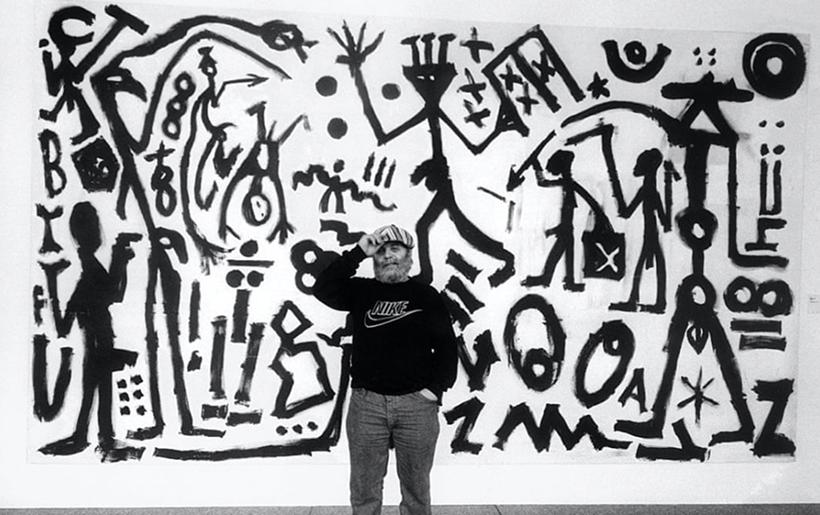
SELECTED WORKS
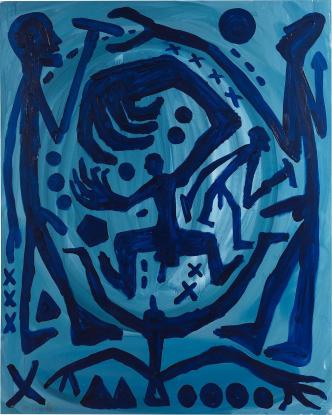
A.R. Penck, Untitled, 1994
Oil on canvas
160 x 130 cm | 63 x 51.2 in

A.R. Penck, Untitled (TX), circa, 1990
Acrylic on canvas
100 x 140 cm | 39.4 x 55.1 in
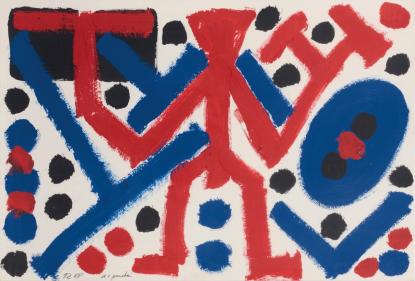
A.R. Penck, Untitled, circa, 1980
acrylic on cardboard
53 x 78,5 cm | 20.9 x 30.9 in

A.R. Penck, Utopie, 1996
Acrylic on canvas
90 x 70 cm | 35.4 x 27.6 in

A.R. Penck, Untitled, 1990
Ink and wax crayon on paper
150 x 200 cm | 59.1 x 78.7 in

A.R. Penck, SPIELEN UND BAUEN, 2002
Acrylic on canvas
140 x 179 cm | 55.1 x 70.5 in
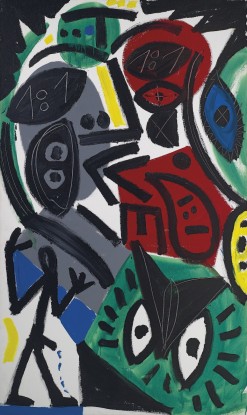
A.R. Penck, Untitled, 1990
Acrylic on canvas
199,5 x 119,5 cm | 78,5 x 47 in

A.R. Penck, Sans Titre (Scorpion), 1995
Gouache and watercolour on card
77 x 59 cm | 30.3 x 23.2 in
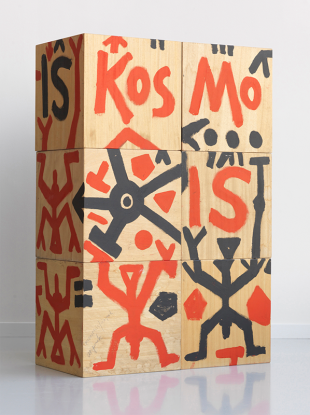
A.R. Penck, Kosmopolis/6-pack, circa 1989/90
Acrylic on wood
180 x 60 x 60 cm | 70.9 x 23.3 x 23.3 in